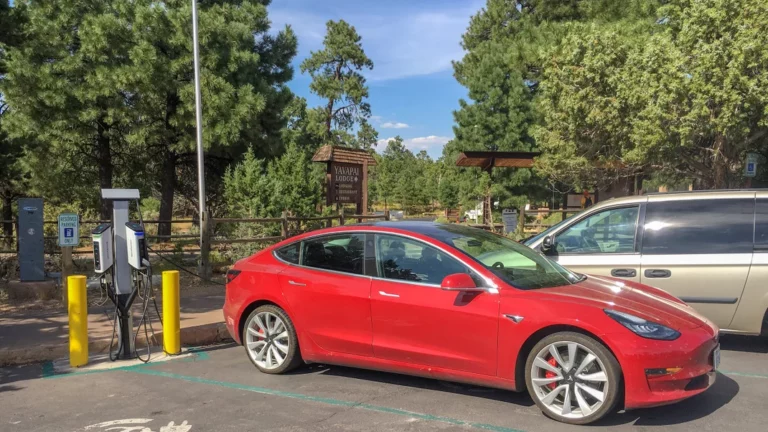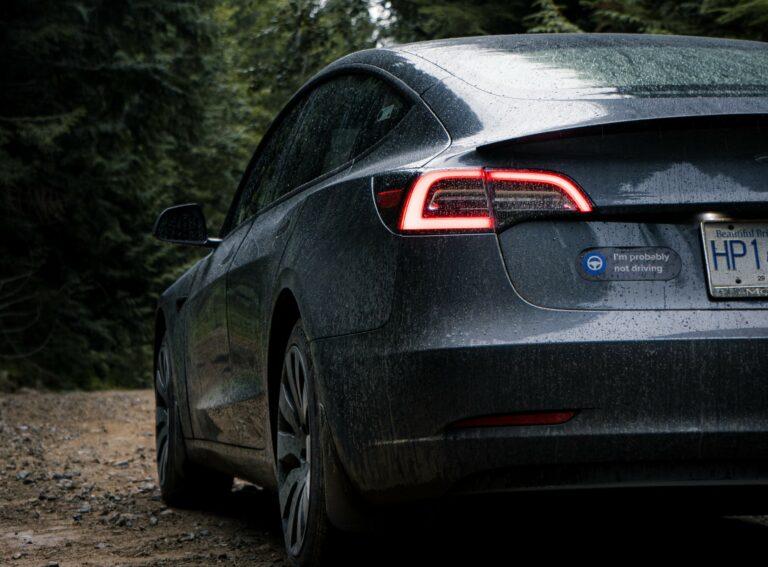
Elevated engagement and prioritization from the public and private sectors around transportation electrification will ensure the protection of America’s natural treasures from the impacts of climate change, as electric vehicles (EVs) produce zero tailpipe emissions. The EC sees an immense opportunity with national parks to electrify the park fleets and shuttle buses and to install EV charging infrastructure at parks and at gateway communities.
However, EV adoption in parks will come with unique challenges that other communities may not face. Electrifying national parks and other public lands – like state parks and beaches – poses unique challenges that will require innovative and resourceful solutions.
Grand Opportunities
The major opportunities for electrifying our national parks include the following:
- Electrifying the park fleet
Electrifying the park service vehicles and ranger vehicles ensures cleaner air for all park-goers, as EVs have zero tailpipe pollution. The Biden Administration’s goal to electrify the federal fleet ensures that all new light-duty park vehicle purchases will be zero-emission by 2027, and all new shuttle bus purchases will be zero-emission by 2035 (if not sooner).
While there is a large task ahead to electrify the National Park Service fleet, there are some parks that are already leading the way in the fleet transition, providing leadership and best practices to other national parks just beginning with deployment. Zion National Park received funding from the Department of Transportation in February to electrify all 26 of their shuttle buses and install 27 charging stations.
2. Electrifying buses that transport park visitors
While many people access national parks in light-duty passenger vehicles, some do via tourist buses. These private tour buses should be encouraged to electrify through dedicated EV charging stations for tour bus operators at the parks. Federal tax credits, like the Section 45W Commercial Clean Vehicle Credit, can help tour bus operators purchase electric buses.
3. Bringing EV charging infrastructure to parks
As we transition to EVs, more and more of the vehicles bringing the 312 million annual visitors to the national parks will be electric. A range of EV charging stations will need to be deployed at the parks, including Level 1, Level 2, and DC fast charging stations. The national parks are unique in that they are managed by the National Park Service (NPS) and housed within the U.S. Department of the Interior – federal entities – representing a unique opportunity for public-private partnerships in installing and maintaining EV charging stations. Private entities have already played a significant role in the installation of EV charging stations in national parks thus far. For example, BMW donated 100 chargers in 2017, which has been key to showing the demand for more EV charging in parks. Rivian has also upgraded several charging stations in Yosemite National Park to Level 2 charging stations that are free for the public. These partnerships must be encouraged to meet growing market demand.
4. Bringing EV charging infrastructure to gateway communities
Gateway communities are often the towns that Park visitors frequent right before entering the national park. By installing EV charging stations in these communities, not only can the added charging infrastructure serve residents, but they can also provide a means of economic development by driving additional business to gateway communities. Anecdotally, EV drivers will spend anywhere from $5 to $40 when stopped to charge for more than 20 minutes, representing the potential for new revenue streams for communities. There are multiple federal funding opportunities to install EV charging stations in rural communities. In particular, rural gateway communities can look to the Charging and Fueling Infrastructure (CFI) grant program, or take advantage of the Section 30C tax credit for installing EV charging infrastructure. If a gateway community is located along an identified alternative fuel corridor (AFC), it is likely the community could host one of the National EV Infrastructure (NEVI) EV charging stations.
See more information about federal funding opportunities on the EC’s EV Funding Finder.

Challenges:
- Lack of current electric grid infrastructure within national parks
Many national parks are in rural areas that lack robust electric grid infrastructure, which makes installing EV charging infrastructure a challenge. However, national parks can implement solutions like solar canopy charging stations, which can also reduce the need for grid upgrades. Additional solar and energy storage solutions can also be paired together to provide access to charging in even the most remote locations. See solar and EV charging station examples here and here.
Thus far, parks that have installed charging stations are located all over the US, from the Everglades in Florida to Acadia in Maine, and Mount Rainier in Washington state.
2. Lack of network connectivity within national parks and rural gateway communities
National parks are often in rural or remote areas with minimal network connectivity. While not an issue for EV charging stations owned by the National Park Service to charge their own fleets, connectivity is an issue for visitors accessing public EV charging stations at visitor centers and trailheads. If network connectivity cannot be established, cell signal may be the next best option. The EV charging station could have a number for EV drivers to call and pay for the charging session. If cell signal is not a possibility, then parks will need to work with stakeholders to find alternate solutions. One such option could be that a visitor purchases a pass to charge or to gain access to the EV charging stations throughout the park.
For EV charging stations located in rural gateway communities, similar network connectivity and cell signal issues may apply. It should be noted that some EV charging stations deployed under the National EV Infrastructure (NEVI) program will be installed in remote locations but require network connectivity, providing an avenue to look to for best practices for EV charging stations in remote locations.
3. Lack of public transit options to national parks
While national parks host 312 million visitors per year, they remain largely inaccessible to visitors without passenger vehicles. As the nation overhauls the way we fuel our vehicles, the way we travel from place to place must be examined. In particular, a broader effort should be made to provide greater public transit options to our national parks. These public transit options should, of course, be electric. Investment in electric public transit will ensure that the greatest number of visitors have access to America’s natural treasures.
A greater number of electric public transit buses also has the added benefit of helping to reduce congestion and engine idling times in parks, reducing carbon emissions even further.
4. Lack of cohesive strategy to electrify gateway communities
As we move to electrify our nation’s transportation system, it is important to work strategically and with multiple stakeholders to ensure that the transition occurs effectively, equitably, and efficiently. While there are many active federal funding opportunities for installing EV charging infrastructure, the competitive funding opportunities may require more technical input and time than a gateway community can give, and often require a certain amount of match funding from the local community. To circumvent this, gateway communities could consider pooling their time and resources together on a joint application under the Charging and Fueling Infrastructure (CFI) grant program.
Following National Parks Week, the Electrification Coalition is looking forward to addressing these challenges and capitalizing on the opportunities – and maybe going for a drive along Skyline Drive in Shenandoah National Park in an EV.
